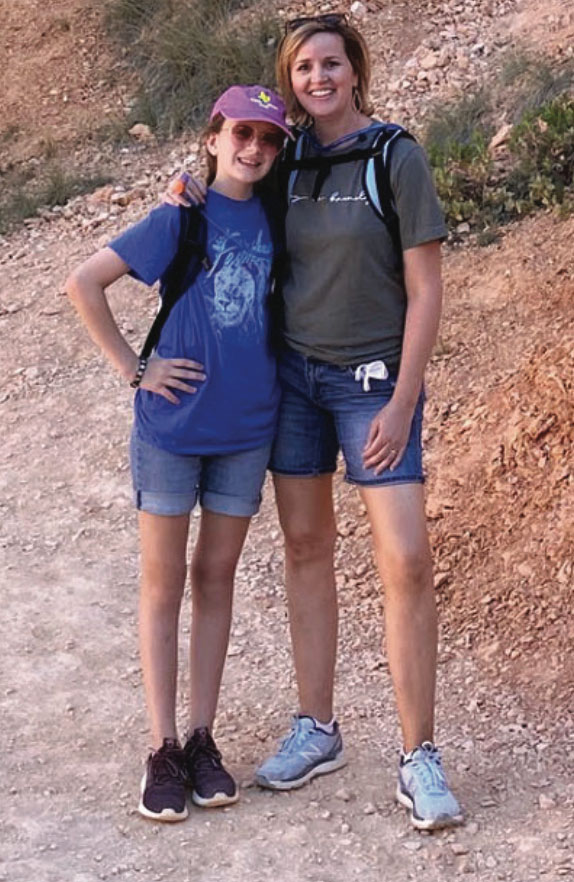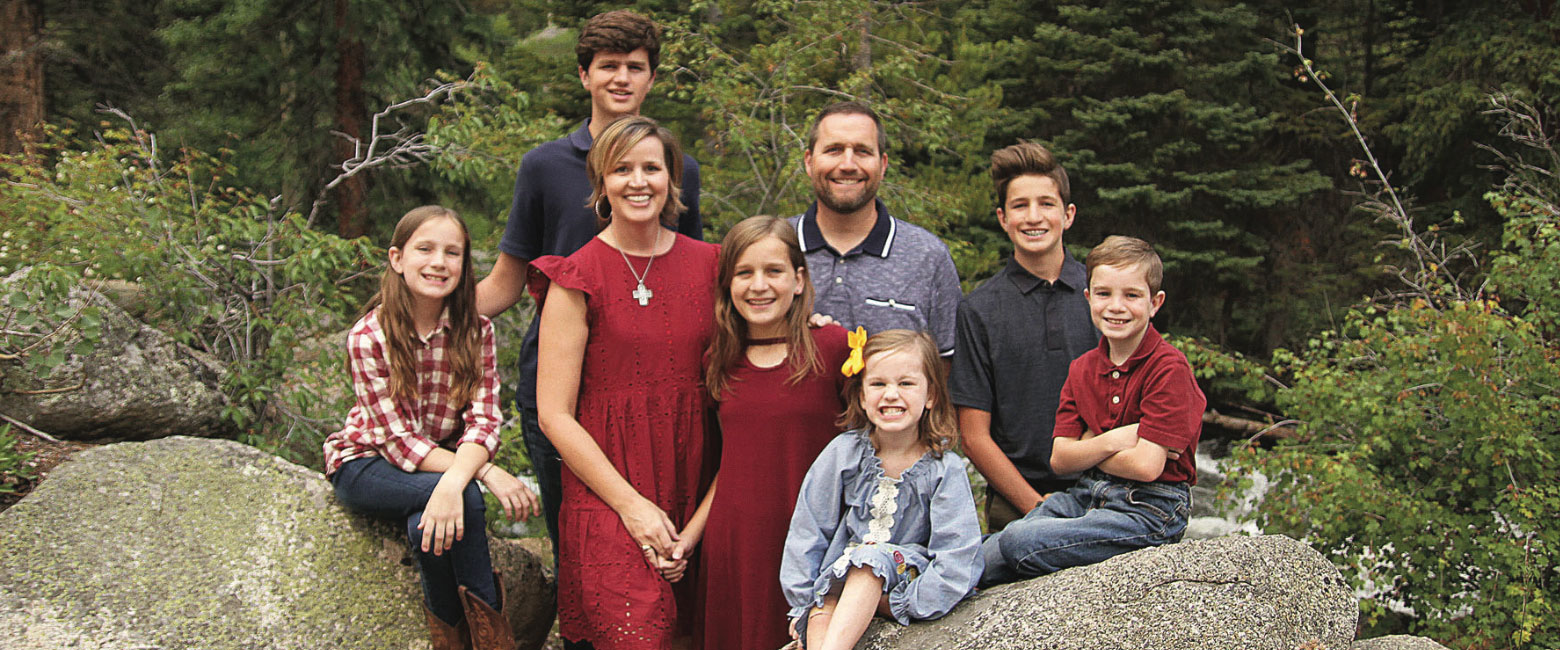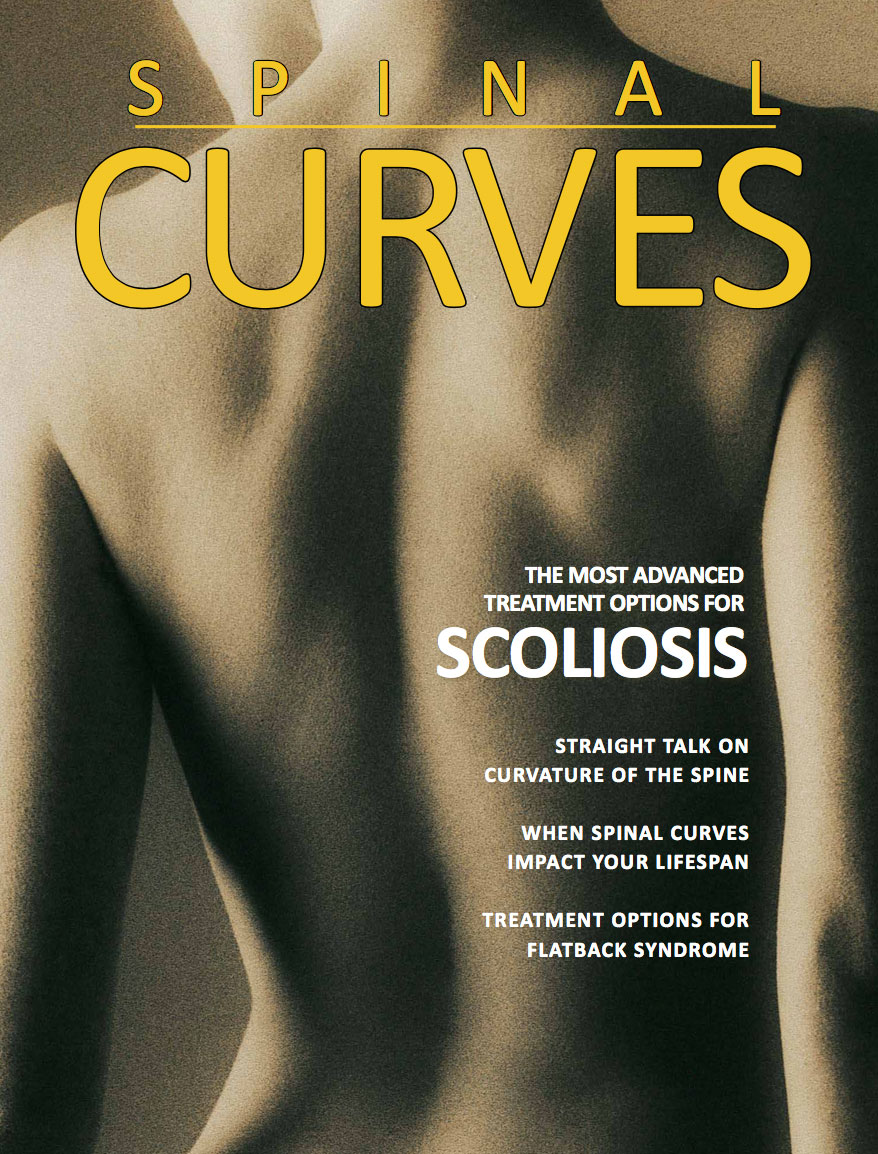
Adult Scoliosis
Mother: Kathryn
Scoliosis surgery 2006
68 degrees corrected to 11 degrees
Kathryn remembers growing up being told that her great aunt had scoliosis. That was long before there were modern surgical methods of correcting such a spinal curve. In earlier generations, patients with spinal curves often had a shortened lifespan, ongoing back pain, complications on internal organs, and difficulty breathing as the curve progressed and pressed against the lungs.
“I guess the scoliosis skipped two generations and landed on me,” says Kathryn. “I wore a brace for over five years through middle school and high school which helped at the me. Later, I married and had three children when the curve nally progressed to 68 degrees — a point that I knew it was me to deal with it. We researched fellowship-trained scoliosis specialists, and talked with several people who had scoliosis surgery, and they all recommended Dr. Geck.”
“During my visit with Dr. Geck, he was pragmatic that corrective surgery was likely inevitable, not a matter of if, but when. The curve now was getting worse, at a rate of 3 to 5 degrees a year. I was in my early 30s. If I waited 10 years, the curve would likely get worse, and there would be increased potential for nerve damage with surgery as I aged.”
Kathryn and her husband still wanted to have more kids, and along with Dr. Geck, they concluded it was best to deal with surgical correc on now while she was younger.
“My back pain was ge ng worse and I was having shortness of breath as the curve was now pressing on my lungs.” Kathryn remembers. “We wanted to have more children and the curve would prevent that. But any kind of spine surgery is a serious decision. I wondered if my quality of life would be better, because scoliosis can be challenging. So I had real concerns. The other issue was the length of recovery me. The curve required an incision that would go from T2 to L1. Our three children were toddlers at the me and required a lot from me.”
Surgery was done in 2006, before the latest advance in mini scoliosis surgery that enables correction through three smaller incisions. Thankfully the correc ve surgery went well, the 68 degree spinal curve was corrected to only 11 degrees, and the Whitaker family grew by three more children in the years a er the surgery.
“I picked up two inches in height after the surgery, which was fantastic,” Kathryn remembers. “I work out 5 days a week and stretch, which helps me manage occasional back pain. And with the curve corrected, I can breathe again.”







